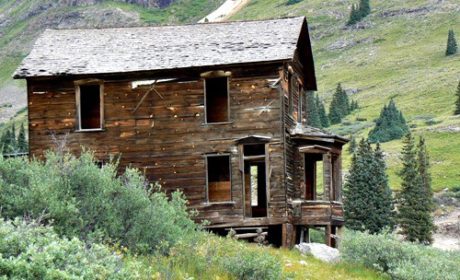From Virginia to Louisiana and beyond, there is plenty to explore in the southern United States. But, if you’re looking to get into the fascinating and often heartbreaking history of the South, a boomer road trip through Plantation Country is a good way to go.
Regular contributor Debi Lander, from ByLanderSea, is here to share her experience with us as she hit up this area, starting from New Orleans and heading west. Hop on board for a Louisiana plantation tours road trip.
If you’ve watched Gone with the Wind (or read the book), your vision of the antebellum South might be Tara. Miss Scarlet, played by Vivien Leigh, lead a spoiled life on that plantation with Mammy taking care of her needs.
Before the Civil War, cotton was king and sugar reigned as ‘white gold’; the labor-intensive crops maintained the South’s economy. They created fortunes for land barons who bought and sold slaves to work the fields and in other buildings of the estate.
During this time, New Orleans, a French city, became one of America’s wealthiest—its port as the center for trade. As a result, many grand plantations lined the Mississippi River Road. And it’s possible to visit them on a Louisiana road trip.
Louisiana plantation tours for boomer roadtrippers
Exploring these historic sites provides a fascinating history lesson. Visitors no longer tour just the grand mansions, they also see and hear about the impoverished life of the slaves.
I started my road trip from New Orleans, headed west toward Plantation Country. I visited five estates, all within an hour and a half’s drive. Had I more time, I could have toured ten.
First Stop: Destrehan Plantation
Destrehan Plantation, originally built in 1787, began producing indigo, then switched to the more profitable sugar. The owner, Jean Noel Destrehan, and his brother-in-law pioneered the granulation of sugar, making Destrehan one of the largest sugar-producing plantations. Jean Noel went on to become a driving force for Louisiana statehood.
Be sure to watch the excellent introductory video and visit the Jefferson Room before entering the Big House. The Jefferson Room exhibits an original document signed by Thomas Jefferson, appointing Jean Noel Destrehan to the Orleans Territorial Council. The room also contains museum reproductions of key documents involved with the Louisiana Purchase.

Costumed interpreters lead tours through the mansion and tree covered grounds. You’ll learn much about the French-speaking family.
In addition, crafts and tradesmen demonstrate their skills providing a hands-on glimpse into the methods of the past. Here, I learned that the cooper or barrel maker was considered the most valuable slave, with barrels necessary for shipping sugar. A special exhibit on the 1811 Louisiana Slave Revolt tells how Destrehan became the site of the revolt trial.
In the early 1900s, the property’s business changed to petrochemical production, as did much of the surrounding area. We have the River Road Historical Society to thank for rescuing and restoring the historic site.
For a fun travel adventure, combine a visit to Destrehan Plantation with a swamp tour.
Second Stop: Oak Alley Plantation
If you visit just one plantation, you will likely choose Oak Alley, known for the 28 live oaks that line the quarter-mile long entryway to the Greek Revival mansion. The image of the 300-year old, graceful trees, draped in Spanish moss, has become synonymous with the Old South.
Walking under the dreamy canopy where limbs create a magnificent arch overhead revives the splendor of bygone days. You also get a panoramic view of the oaks from the second floor balcony during the mansion tour.
The interior of the house disappoints some; I suspect visitors might expect something even grander. A center hall divides the ground floor, with nearly one half devoted to the dining room.
For those unable to climb to the second floor, a virtual I-pad tour awaits. The upstairs includes just four bedrooms: a nursery, a museum room displaying historical artifacts from the site, and the lavender bedroom—as appointed by the final owner, Mrs. Stewart.
The Stewart’s bought the property and restored it in the 1920s. They also created the ongoing Oak Alley Foundation.
The reconstructed slave dwellings and exhibits are a must. They include some wonderful stories, like Antoine, a slave who helped cultivate pecan trees and some chilling displays (like a pair of shackles). The Sugarcane Theatre shows a film about the crop’s economic importance.
For hungry visitors, the restaurant offers choices like Po-Boys, gumbo and seafood dishes. Overnight stays are available in newly built cottages, compare prices here.
Third Stop: Houmas House and Gardens
Houmas House and Gardens in Darrow is referred to as the Crown Jewel of Louisiana’s River Road. The 38-acre estate ranks as a must-see for gardeners.
The manicured grounds include the Burnside Oak, named for the colorful bachelor owner during the 1800s, Japanese gardens, bridges, fountains, pools and much statuary – some of it whimsical. Even children like to explore these flowering green acres. Meander among many blooming plants and paths, there are lots of benches if you need to sit and rest.
Though a bit pricey, an overnight stay in a cottage offers the sheer delight of evening strolls or early morning walks among the grandeur. Plus, the Turtle Bar is especially wonderful when you don’t have to drive home.
Docents in the manor house, once called the “Sugar Palace,” explain how it survived wars, floods, abandonment, and the ravages of time. Lying on either side of the manor, stand two unusual, hexagonal garconnieres or bachelor apartments. You’ll end up taking a photo, I’m sure.
Visitors find three on-site restaurants for breakfast, lunch, and dinner, featuring some of the finest Louisiana cooking. I chose the ornate Green Room, part of Latil’s Landing, a to-die-for 1770s French house, that provides the perfect setting for chef Jeremy Langlois’ imaginative cuisine.
The massive Louisiana River Road Interpretive Center, now under construction, is scheduled to open fall of 2019.
Save time by purchasing your Houmas House Plantation tour ticket online.
Fourth Stop: Laura Plantation
Laura Plantation presents a Creole style plantation house in a riot of color: yellow, red, blue and pink. The guides do an exceptional job telling stories of the four generations of characters who lived and worked there.
At Laura Plantation, they don’t sugarcoat the complex relationships between owners, women, children, and slaves. The stories are based upon personal accounts found in the French Archives as well as Laura’s own book, Memories of the Old Plantation Home.
Laura Locoul was born on the family plantation on Christmas Eve in 1861. She grew up on the plantation and in her family’s various homes in New Orleans’ French Quarter.
Following her marriage to Charles Gore in 1891, Laura moved to his hometown of St. Louis, Missouri. Laura’s manuscript, written at the urging of her daughters and only rediscovered in 1993, offers rare, first-hand glimpses into Creole Louisiana. The book remains the basis for the personal stories told every day at Laura Plantation.

To better understand the Creole lifestyle, the plantation website offers this description: “Creole Louisiana was a place where class, not race, determined social status, where rural life conformed to rigid disciplines, where human bondage created wealth, where adherence to the family business and tradition was paramount, where women ran businesses and owned property, where democratic ideals and individualism were held in contempt and where, until the 20th century, people spoke French and lived this way, separate from the dominant White-Anglo-Saxon-Protestant American culture.
Today, we define Creole through culture, foodways, music, folklore, family traditions, architecture, the Catholic faith and genealogy. Even so, our attempts to understand the Creole world of our ancestors through an imposed English-speaking American lens often fall short of the complexities that defined it.”
You’ll leave with much to remember and to ponder.
Plan ahead. Purchase your tour ticket to Laura Plantation online.
Fifth Stop: Whitney Plantation
I left the most poignant plantation in Louisiana for last, Whitney Plantation. Whitney is the only plantation museum in the state with an exclusive focus on the lives of enslaved people.
You first meet the Children of Whitney, a series of clay sculptures by artist Woodrow Nash, arranged in an old church. They represent former slaves as they were at the time of emancipation—children. Whitney presents their stories told in their own words many years later.
As you move throughout the church, the statues grab at your heart and make you wonder what they are thinking. They are so lifelike, you want to strike up a conversation. I guarantee you won’t forget them.
My tour continued to the field of Angels, a memorial dedicated to the 2,200 Louisiana slave children who died before their third birthday. A statue of a black angel carrying a baby to Heaven highlights this touching location.

Nearby is the Wall of Honor dedicated to all the people who were enslaved on Whitney Plantation. The names and the information related to them (origin, age, skills) were retrieved from original archives and engraved on granite slabs.
A series of 216 granite slabs carry the 107,000 names recorded by researcher Gwendolyn Midlo Hall in the Louisiana Slave Database. There are highlighted quotes and some related pictures.
The Big House offers another raised French Creole style cottage, like Laura Plantation’s, this one built of masonry and cypress in the late 18th century. It is one of the earliest and best preserved Creole plantation houses standing.
Sometime prior to 1815, the Big House expanded to seven rooms on each level, plus a full-length gallery across the front and an open loggia facing the rear. The interior and exterior decorative wall paintings, similar to frescoes, are lovely details, and another rarity.

The detached kitchen is the oldest in Louisiana. Pigeon holes cut in either end of the gabled roof allowed this loft to house the birds.
The French Creole Barn, the last surviving in the US, features tall hip roofs. Originally 22 slave cabins stood on the site, two of them original, and the others acquired from the Myrtle Grove Plantation in Terrebonne Parish.
Staying in New Orleans? Let someone else do the drive on your tour to Whitney Plantation.
I was thrilled with my visit to the plantation road trip on the Mississippi River Road, even though I missed five more nearby estates. I suggest a visit anytime, but you might want to avoid the sultry days of summer. Trust me—a Louisiana road trip in the summer is hot and sticky.
Would you like to take a road trip through Louisiana Plantation Country? Come join the conversation at the My Itchy Travel Feet page on Facebook. Or send us an email with your thoughts.









